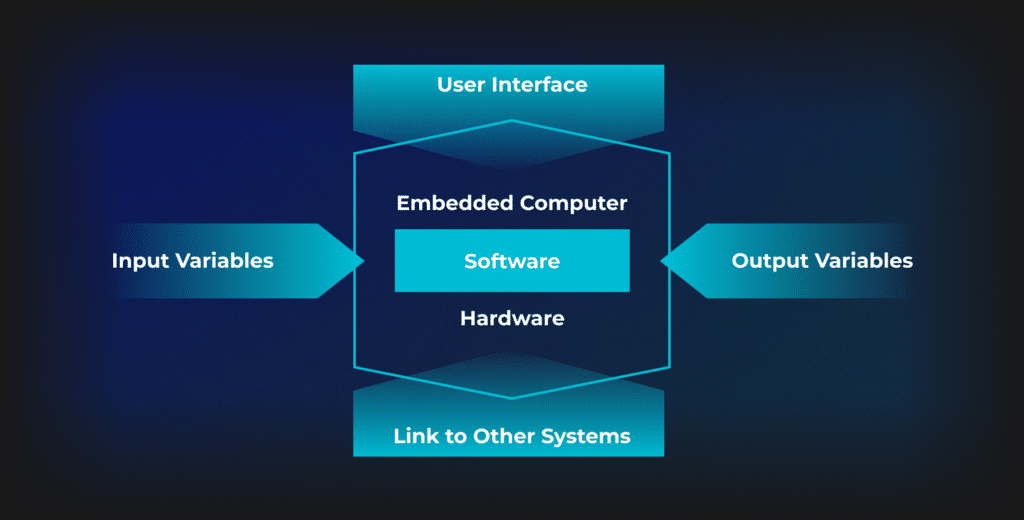How to Hire Embedded Software Engineers for Your Development
Embedded systems front-run traditional computers in many ways. If you’re looking for fast performance or optimized operating costs, an embedded engineer for hire will build you a system that delivers that. Typically, an embedded system is built with several non-functional requirements in mind, such as memory capacity and execution time to enable it to perform a single task faster and more efficiently. And since the solution is objective towards a specific task, the hardware used to build it usually costs less.

For these reasons, the demand for embedded systems will keep rising in the coming years. Precedence Research forecasts the solution’s global market share to expand at a compound annual growth rate of 4.77% between now and 2033. While this signals a positive step towards the maturity of embedded systems, it will result in a hiring stampede, compounding the current challenges of recruiting experts in this domain. Moreover, embedded engineers are not evey-day job hunters. This is because their hesitance toward mastering new technologies makes them less attractive for modern job offerings.
So, what should you pay attention to when hunting for embedded system engineers in 2023, especially if you’re going to find them in the first place? And what are the odds of finding junior cross-functional developers who can build embedded systems at more affordable rates than their specialist counterparts? Find out more in our expert guide on how to hire embedded software engineers effectively.
What Does an Embedded Developer Do?
An embedded developer is a highly-skilled software engineer who can design, develop, and program code to control machines or devices running on embedded systems. Unlike regular developers who can also write code, embedded engineers must demonstrate in-depth expertise in understanding the hardware it runs on. In addition to that, they require robust skills to oversee the whole embedded system project, from design to integration.
You can hire embedded engineers for a wide range of services, including:
Linux Kernel Customization
These professionals have the skills and expertise to customize a Linux Kernel operating system for coding and deploying embedded applications. For instance, they can use Linux-based distributions, such as the Yocto Project, Buildroot, or OpenWrt, to optimize the operating system for your embedded applications. In addition to that, embedded experts can use Linux-supported programming languages, such as Python, C, and C+, to create the software that will power the embedded device on Linux.
Firmware Development
You can hire talent for embedded software development services to build unique firmware that addresses the exact needs and pain points of your business. A top-rated expert in this field will use low-level programming skills to write code in C, C++, or your custom assembly language and program the firmware to directly access hardware registers. The firmware can also be programmed to interrupt handlers or access and manipulate memory addresses.
Hardware Integration
An expert embedded programmer for hire can work alongside your hardware engineers to integrate physical software components with embedded systems. Their expertise is handy in defining the communication protocols, data formats, and pin configurations necessary to create a smooth hardware-software interface. Moreover, these engineers can create APIs or custom software abstractions to facilitate seamless integration of hardware with the system’s software. In addition to that, the embedded programmer will design the circuitry, select appropriate microcontrollers, and ensure the hardware components sync correctly with the software.
Device Drivers and Board Support Packages (BSPs)
After customizing your Linux and building firmware, you’ll need to develop device drivers or a Board Support Package (BSP) to allow the software to run in the custom hardware environment. Embedded software developers have the skills and technical know-how to optimize your software stacks and various hardware specifications, such as memory and Serial Peripheral Interface (SPI), for seamless software-hardware communication.
Testing and Debugging
Like other specialized developers, embedded engineers can perform testing and debugging at various stages to ensure the applications they build function as intended. They have robust experience in using a wide range of testing & debugging tools and technologies, including Joint Test Action Group (JTAG) debuggers for real-time debugging, variables inspection, and boundary scan testing. Other tools include In-Circuit Emulators (ICE) for debugging code on memory, setting breakpoints, and tracing program executions to flag integrity concerns.
Technical Documentation
While embedded developers might be slow to learn about new technologies, they don’t lag when it comes to implementing best practices in software development. While designing and integrating your embedded application, the programmers will create technical documentation highlighting the system’s specifications, user manuals, and design documents. Technical documentation plays a critical role in facilitating system understanding, knowledge transfer, troubleshooting, and future maintenance and upgrades.
Skills Required from an Embedded Programmer
Embedded programmers are highly-skilled tech professionals with in-depth proficiency in:
Embedded Operating System
Experts in this domain are well-versed with the Linux Kernel operating system and can work around its algorithm concepts and data structures. And on top of basic coding and programming, experts in this field can also perform debugging and system upgrades.
Embedded Architecture
Qualified developers in this domain demonstrate an in-depth understanding of embedded architecture. This extends to RISC-V instruction set architecture (ISA) experience and skills for customizing open, stable, and modular clean-slate system designs.

Embedded Software Programming Languages
When you hire embedded developer, expect them to demonstrate a strong understanding of C, C++, and Python programming languages.
Industries for Which We May Find a Talented Embedded Engineer for Hire
Embedded software developers are in high demand across various industry verticals that rely heavily on embedded system applications. We can help you find value-matched embedded engineers for projects in the following industries:
- Consumer Electronics: partner with embedded software development experts to optimize performance, power management, and network connectivity of your Android smartphone, tablet, or wearable.
- Healthcare: An embedded software developer for healthcare can help ensure the safety, reliability, and accuracy of medical devices like diagnostic systems and medical imaging gadgets.
- Transportation and Logistics: Hire embedded engineers to develop software applications for real-time data processing, vehicle tracking, and route planning.
- Telecommunications: work with embedded developers to build custom software for data transmission or advanced signal processing and attain a competitive edge in this industry.
- Internet of Things (IoT): Embedded engineering experts can help you design software for powering IoT devices, gateways, and edge computing applications.
Embedded Software Development Challenges and What Skillset Do the Developers Need to Succeed
Gone are the days when you could hire embedded programmer to use a simple 8-bit or 16-bit architecture that is easier to handle and master over the course of a few months — typically, they would do this within the development lifecycle. Today, embedded systems have evolved tremendously and moved to more complex 32-bit architectures. This means a typical system is designed to include additional peripherals, such as hardware for Bluetooth, USB, DMA, or external memory.
For this and many other reasons, you’re likely to experience various challenges during embedded software development. Here are the problems to expect:
Design Limitations
The challenge of design constraints has been in existence for decades. Typically, the modern technology market expects your team to design and develop an embedded system that packs more power in a smaller space with a long-lasting battery lifespan. Most importantly, the application should exhibit long-term performance stability with less maintenance needs. And depending on the application of your system, you might also need to integrate the system with a scalable processor that can run on ultra-low power without compromising performance.
Stability
Stability is another top challenge to expect after you hire embedded software programmers to build an application. Achieving stability can prove problematic due to constraints in meeting real-time requirements and limited resources for storage, memory, energy, and processing power. Other factors that can affect stability include the complex nature of interactions between the embedded system’s software and hardware components. Typically, embedded applications feature several interconnected peripherals, communication interfaces, and subsystems, whose interactions must be coordinated for accurate timing of dependencies and concurrency.
Safety
The most prevalent application of embedded systems is critical domains like medical devices, automotive, industrial control software, and aerospace. If you’re looking to deploy your applications in one of these domains, you’ll face the challenge of ensuring utmost safety through meticulous design, testing, and validation. Otherwise, the system might fail and result in server losses, such as loss of life or endless injury lawsuits, which can hurt your company’s finances.
Compatibility and Integrity
Gartner estimates that most applications on the market, including embedded systems, are designed and deployed by relatively new businesses younger than 3 years old. Even with their probable expertise in the field of software development, a majority of these businesses lack the technical know-how and experience to safely deploy applications in an IoT environment. In fact, Palo Alto Networks estimated that nearly 98% of IoT traffic was not secured as of two years ago.
This means that deploying more IoT applications in the background of connectivity will only increase pressure on their adaptability capabilities. Consequently, developers should rethink their approach to embedded systems deployment and implement it on a simple interface via all channels for extreme compatibility. And since integrity serves the function of security in an IoT ecosystem, developers must implement cybersecurity measures at every level, from the node all the way to the cloud.
While these challenges are bound to happen in most projects, you can hire embedded systems engineers with certain skill sets to overcome them:
- Real-time programming: Real-time programming skills are essential to understanding the timing constraints in the application and implementing task scheduling or prioritization techniques to meet deadlines.
- Resource management: On top of best coding practices, resource management skills will help your developers implement optimization techniques to ensure the project succeeds within the set budget and parameters.
- Threat modeling: Threat modeling skills allow developers to analyze risk and program mitigation protocols in the event of a disaster. Moreover, this skill will also help the team build with safety and cybersecurity in mind from the onset.
- Domain expertise: Another skill to consider is the developer’s domain expertise and whether it relates to the market you’re targeting. With this qualification, the talent will easily understand the specific requirements of the project, constraints, and regulations to succeed within the set timeline.
- Communication and other soft skills: Lastly, it will help if you hire team members who can communicate effectively and respectfully to collaborate at all stages when building the product. Watch out for soft skills like understanding, empathy, and teamwork.
How to Hire the Best Embedded Software Developers?
Finding the best embedded software developers requires careful planning, especially if you’re going to save time and resources by engaging qualified candidates only. Here is a step-by-step process on how to do it:
Define the Job Requirements
Start by defining the job requirements that you expect the hired candidates to meet, including qualifications, level of experience, and specific skills. You might also want to include industry-wide certifications, especially if you’re targeting a highly regulated market with your embedded system.
Create a Compelling Description
The next step is crafting a detailed job description that clearly highlights the needs and requirements of the vacant developer role. At this stage, don’t forget to include the unique aspects of the job opportunity, such as company culture and other intricate details to set expectations from the onset and attract the right candidates.
Find the Candidates
Post the job description online to attract matching talents. You can do this on your social media pages, developer community job boards, or professional networking websites, such as LinkedIn. Alternatively, you can share the ad with internal employees or external colleagues, especially if you want to hire through a direct reference.
Screen Resume and Applications
After that, screen the resumes and applications of all candidates who showed interest in the role, and shortlist those who meet basic requirements or qualifications. This means you should pay attention to the individual educational background, certifications, employment history, as well as proficiency in your tech stack.
Conduct Technical Interviews
Invite the candidates for a live interview to assess their technical skills under different problem-solving scenarios. You can also prepare a list of technical questions and issues before the interview so that the candidates can come prepared to demonstrate their skills in debugging systems, integration, and coding.
Assess Soft Skills
Don’t forget to set up another interview to assess the candidate’s soft skills, as these capabilities are essential if you’re going to collaborate effectively and execute the project successfully with business requirements in mind. Prevalent soft skills to test include teamwork, adaptability, problem-solving, and self-initiative.
Present Job Offer
If the candidate passes the above skill tests, proceed to present them with a job offer, highlighting how and when they’ll be compensated for services rendered. You can then take them through a small induction course to understand the values, culture, and ideals of your brand before onboarding them to the main team.
Scale up Your Development Team with Dedicated Embedded Engineers from Newxel
Newxel is a full-service company that can find and hire embedded software engineer from any location. Leverage our fast-hiring process to scale up your team with dedicated embedded engineers in 3 to 5 weeks without any risk on your end. Our recruitment process is thorough and rigorous to pair you with tech professionals who understand all the low-level programming languages used in embedded software development. Even better, we offer a range of turnkey services to free you from the traditional back-office routine so that you can get time to focus on high-value business roles.
Conclusion
Embedded software development is ideal for an array of industries and applications, especially for building highly customized applications specifically tailored for the intended purpose. Moreover, embedded software development is associated with optimized hardware costs, real-time and deterministic behavior, seamless interoperability, as well as greater flexibility and scalability. Use our guide on how to hire embedded developers to find and recruit value-matched talents who will help you build and deploy embedded applications.






